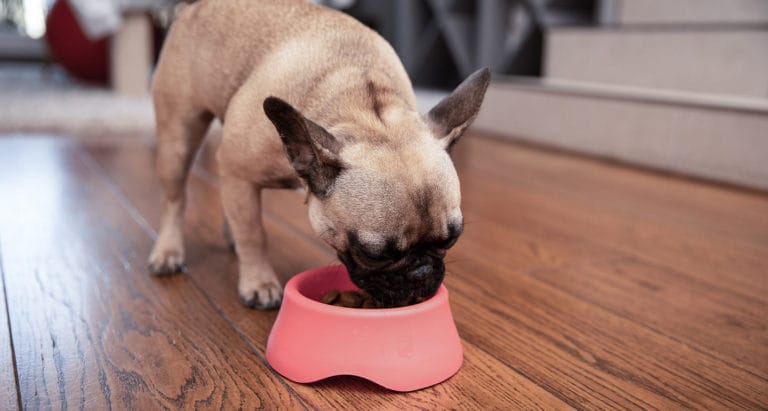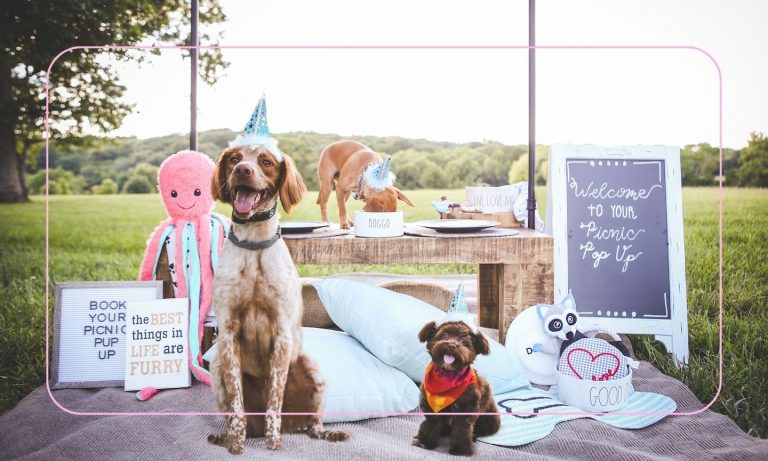Sorry not sorry, but that white plastic doggy gate and wire dog crate just don’t jive with your aesthetic. But what’s a new puppy parent to do? Puppy proofing your home is right up there with choosing a dog name when getting a new furry family member. It’s absolutely vital in keeping dogs safe, and ideally should be done before you even bring your little floof home.
Fortunately, you can be the best pet parent to your new fur baby without sacrificing your home’s carefully curated style. Just let a certified professional dog trainer and an interior designer lead the way.
We turned to trainer Irith Bloom, CPDT-KSA, CDBC, who laid out a step-by-step puppy proofing checklist new doggy parents should follow to ensure that their home or apartment is safe for their pup. Then, we recruited the ultra-talented Steph Musur, interior designer and owner of Illinois-based Steph Musur Designs and 610 Home, for all her tips and tricks for designing a dog-friendly home that’s both safe and chic.
In This Guide:
How To Puppy Proof Your Home
Opt for Decorative Pet Gates and Other Barriers

“It’s OK if your puppy’s world is small for now,” says Bloom, who encourages pet parents to use pet gates to block off rooms in their home that are full of possible doggy disasters—such rooms with expensive furniture or that are fully carpeted, as well as stairs.
Bloom explains that as your puppy gets out of their chewing phase and masters housebreaking, you can give them more freedom. But in the meantime, don’t think you’re stuck with bulky plastic gates.
“I think it’s imperative in my line of work to make sure all the family members are included in the design process,” says Musur. “This ... includes thoughtful touches for our furry family members.”
For Musur, that means incorporating dog-friendly touches, such as custom doggy gates that match the room’s wood railings, paneling, and stains.
Or, if shopping for ready-made pet gates and pens, look for complementary colors and unique design details, such as the arched top on this pet gate from Internet’s Best, available in both white and espresso tones, or the geometric panels of the Cardinal Gates Decorative Freestanding Dog Gate.
Sweep and (Stylishly) Store
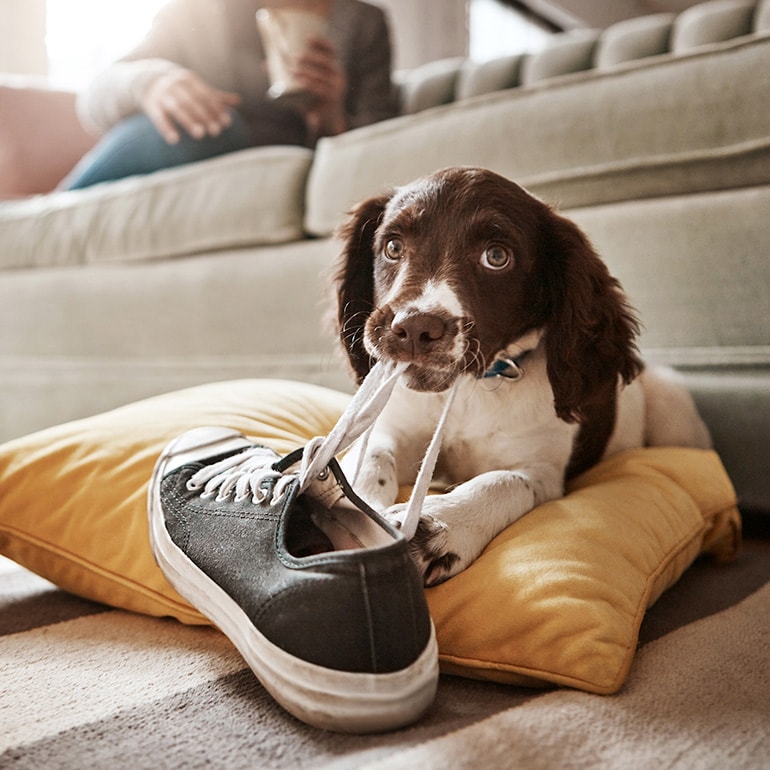
Suss out potential hazards while puppy proofing your house by getting down on their level.
“Get down on your hands and knees and look at everything from that perspective,” instructs Bloom. “Basically, everything you see is a potential puppy chew toy,” she says, so keep your belongings off the floor and secure them out of reach. These include:
- Shoes
- Bags and purses (and everything that’s in them)
- Jewelry
- Breakables
- Small choking hazards (think: those bobby pins you’ve never bothered to pick up)
- Medications
- Batteries
- Cleaning supplies
- House plants (find a list of poisonous plants here)
For stylish storage solutions, Musur uses functional-yet-decorative storage bins in her own home, being sure to place them on high shelving.
Invest in Washable (yet Fashionable) Area Rugs
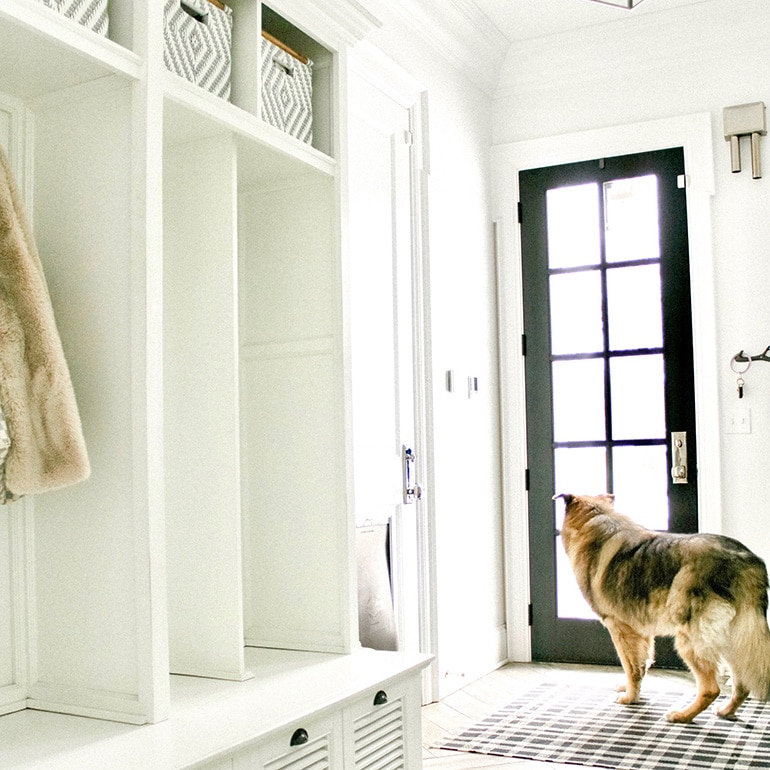
When you're a new puppy parent, washable rugs beat hard-to-clean carpeting every time. While we know you’re going to start house-training your puppy ASAP, it might take a little while for them to get the hang of it.
“Ideally, you should have areas in your home that have pet friendly flooring for easy cleanups,” Musur says. “During the potty training phase of puppyhood, there will be mishaps.”
While you can gate off fully carpeted rooms, you can still add color and comfort to hardwood or tiled floors with washable rugs. “In this mudroom, I used one of our outdoor area rugs that can be thrown in the wash and line-dried,” Musur says.
She also suggests sisal area rugs, which are durable and can be spot cleaned.
Hide All Wires and Cords (Including Blind Cords)
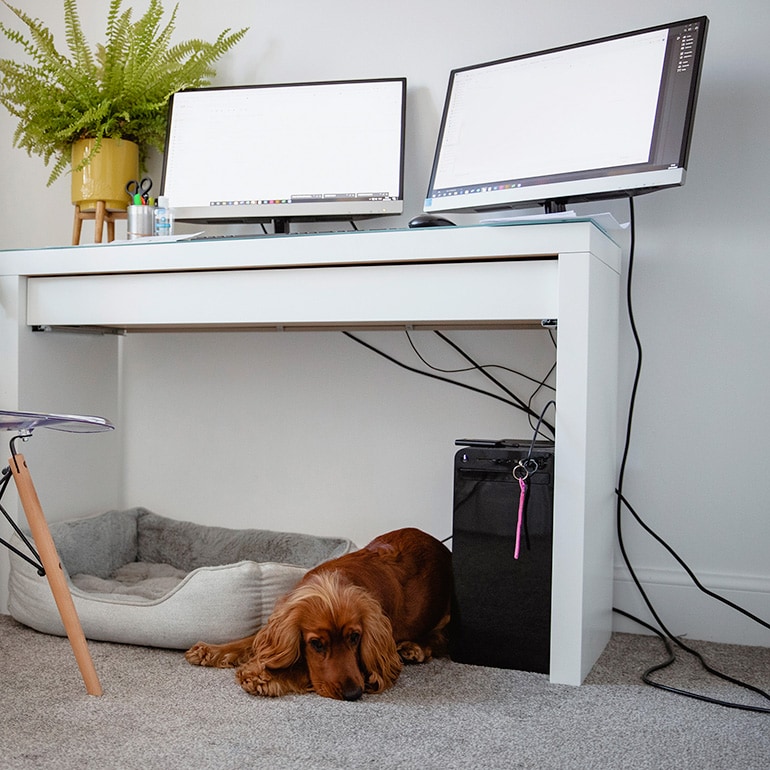
“Hide all electrical and computer cords, or tuck them into a space that is completely inaccessible to the puppy,” says Bloom.
If you have no other options, she advises, use a cord protector, which wraps around your cords to prevent chewing. As an added bonus, Bloom says, "They have the plus of keeping unattractive tangles of cords out of sight.”
This advice also goes for blind cords, which pose a strangulation hazard and should be raised up and out of reach.
Put Invisible Child-Proof Locks on Lower Cabinets
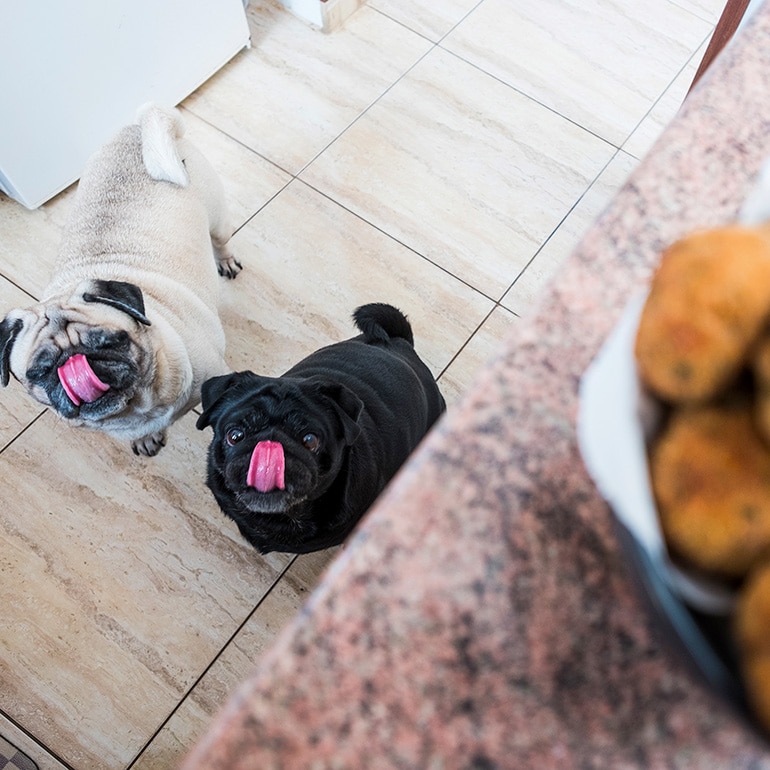
“Puppies can be pretty creative if they want to get into a cabinet,” says Bloom, who recommends using child-proof locks on your lower kitchen cabinets. (If they're child-proof, chances are they'll be pet-proof, too.)
No one likes the look of those large plastic child-proof locks, though, so look for noninvasive magnetic locks or latches that are installed inside the cabinet to keep them hidden from view.
Another safety tip: Keep food high up and out of reach. “So no leaving food on the coffee tables!” she says.
Choose Pet-Friendly Upholstery and Paints
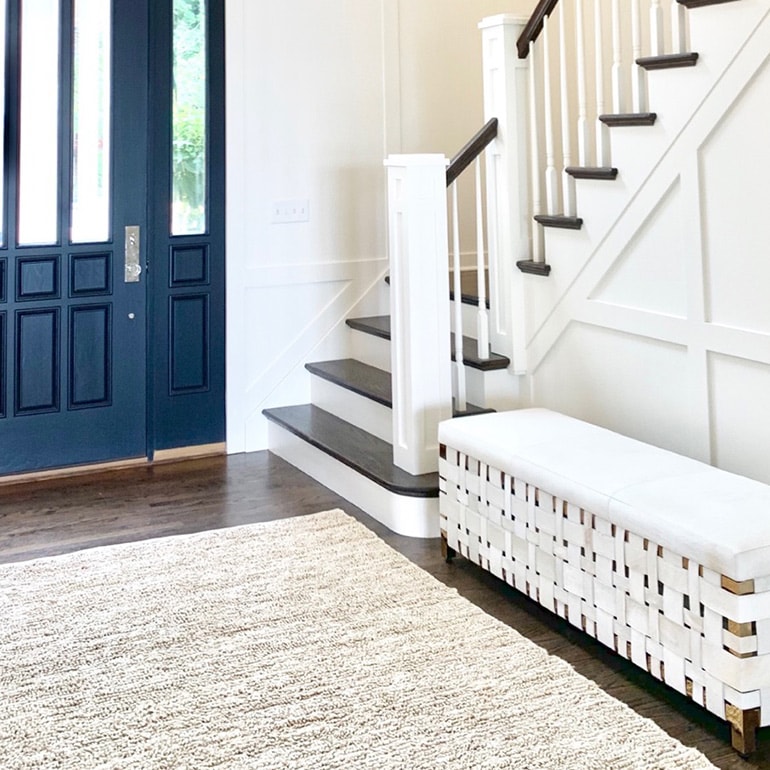
“Pet friendly fabrics have come a long way,” Musur says. “Do not shy away from light fabrics because you have little ones or pets—just get the right fabric. The industry standard for making fabrics family-friendly is becoming the norm.”
“If you want full-proof light fabrics, stick with cowhide, as depicted in this entryway bench. Pets love it and it's the most stain resistant fabric out there to date,” says Musur.
She also suggests using satin finish paints on walls and trim. “This finish is one of the most durable for wiping off almost anything you can throw at it—from muddy paws to accidental art projects,” she notes.
Keep Trash Out of Sight (And Out of Mind)
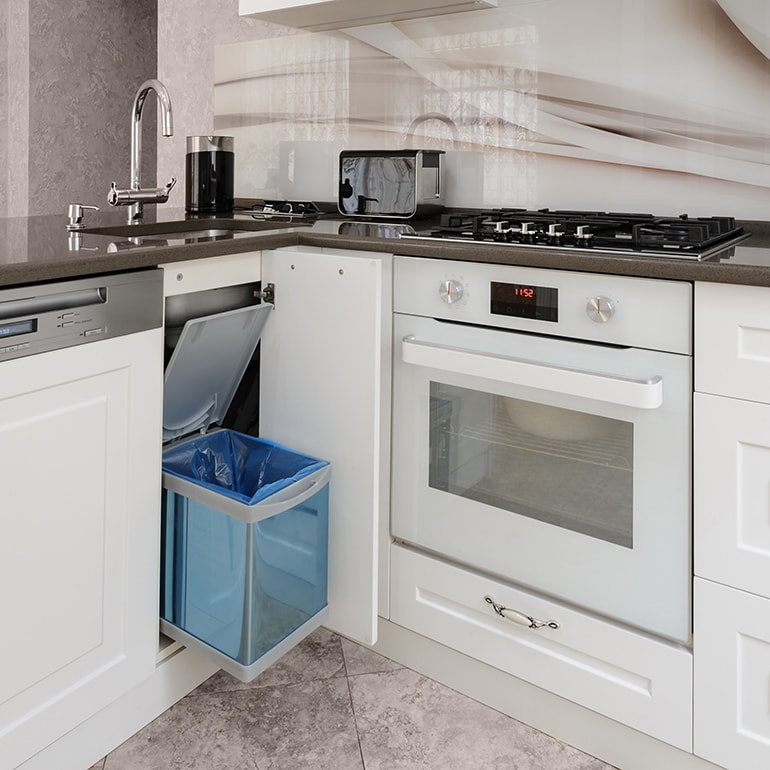
Keep Outside Doors, Windows, and Bathroom Doors Closed
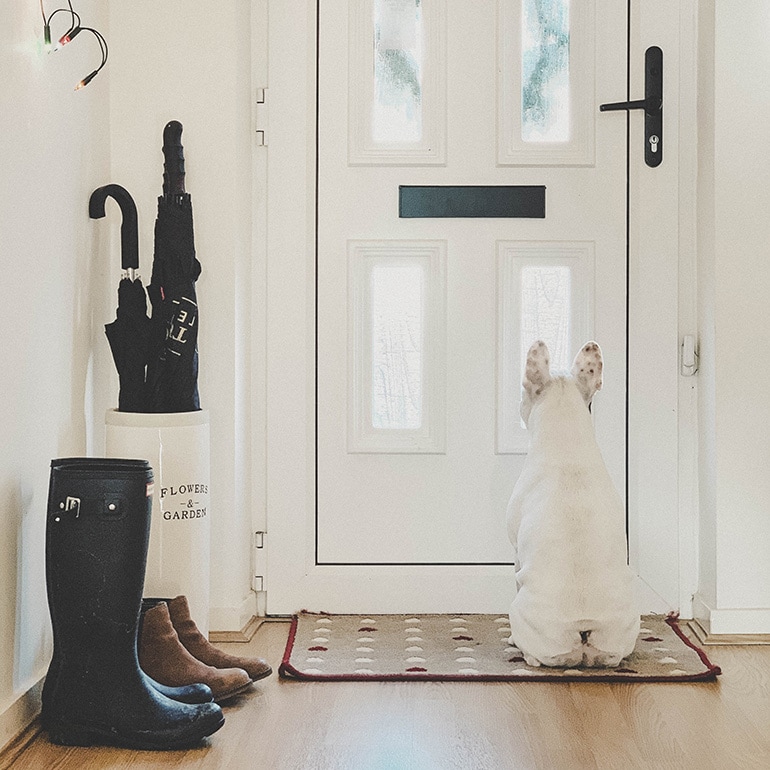
This one is pretty self-explanatory: Keep all windows and doors that lead to the outside securely closed to keep your puppy from escaping.
It’s also a good rule to keep the bathroom door shut to prevent your puppy from chewing on toilet paper, notes Bloom.
If it isn’t a habit already, be sure to start closing the toilet lid too, to prevent your puppy from drinking from the bowl in the event that the bathroom door is left open.
Provide a Space Especially for Your New Little Love
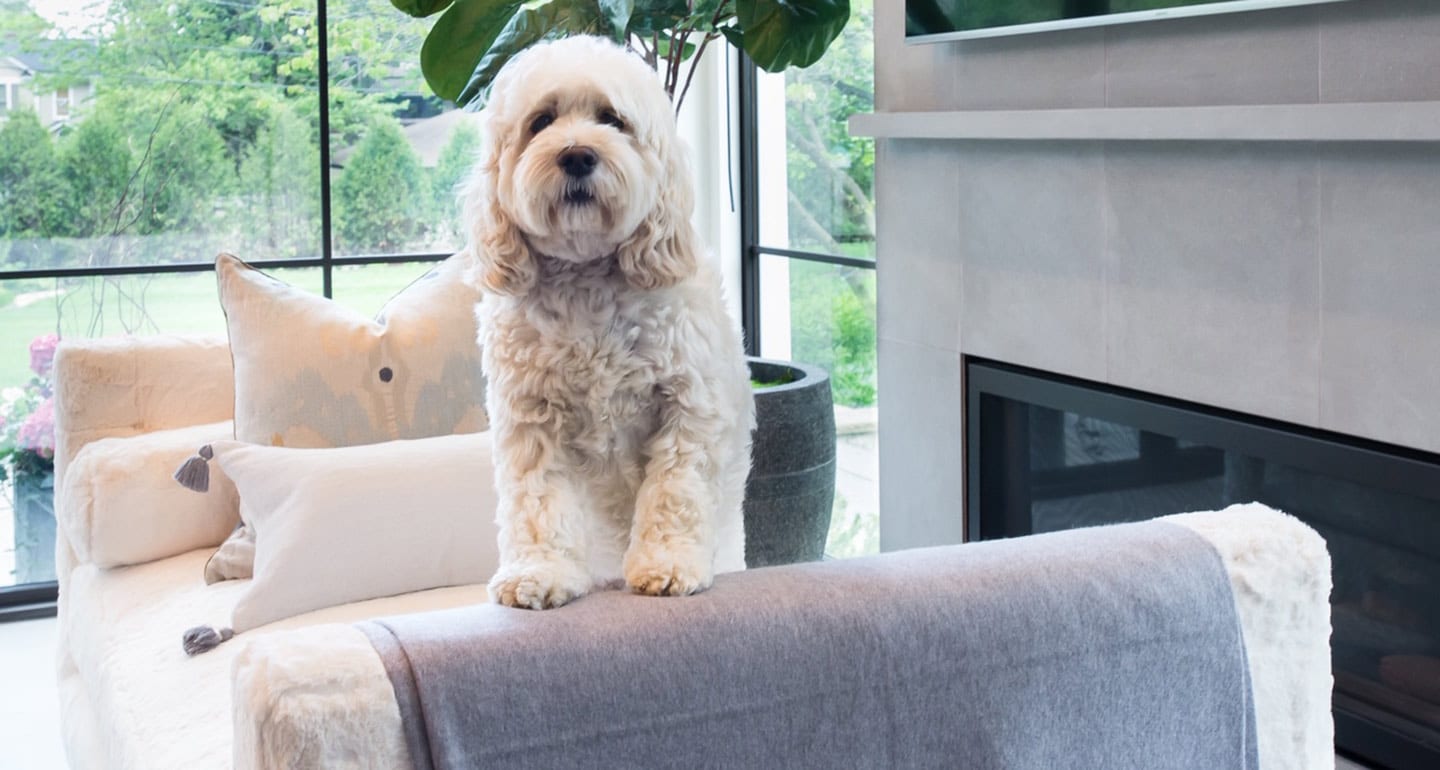
This is now your puppy’s home, too, so while puppy proofing your house, be sure to provide them their own special space.
“For this client who absolutely adores her dog, Bailey, I wanted to design something extra special,” explains Musur. “I had this custom daybed upholstered in a teddy bear fabric that matches her coat. The rumor is that this is Bailey’s favorite spot in the whole home. I think she has impeccable taste!”
To create your own canine corner, choose a similarly stylish dog bed and chic pet blanket.
“You can be stylish and functional—that’s a win/win in my book every time,” Musur says.
How To Puppy Proof Your Yard
Install a Sturdy Fence
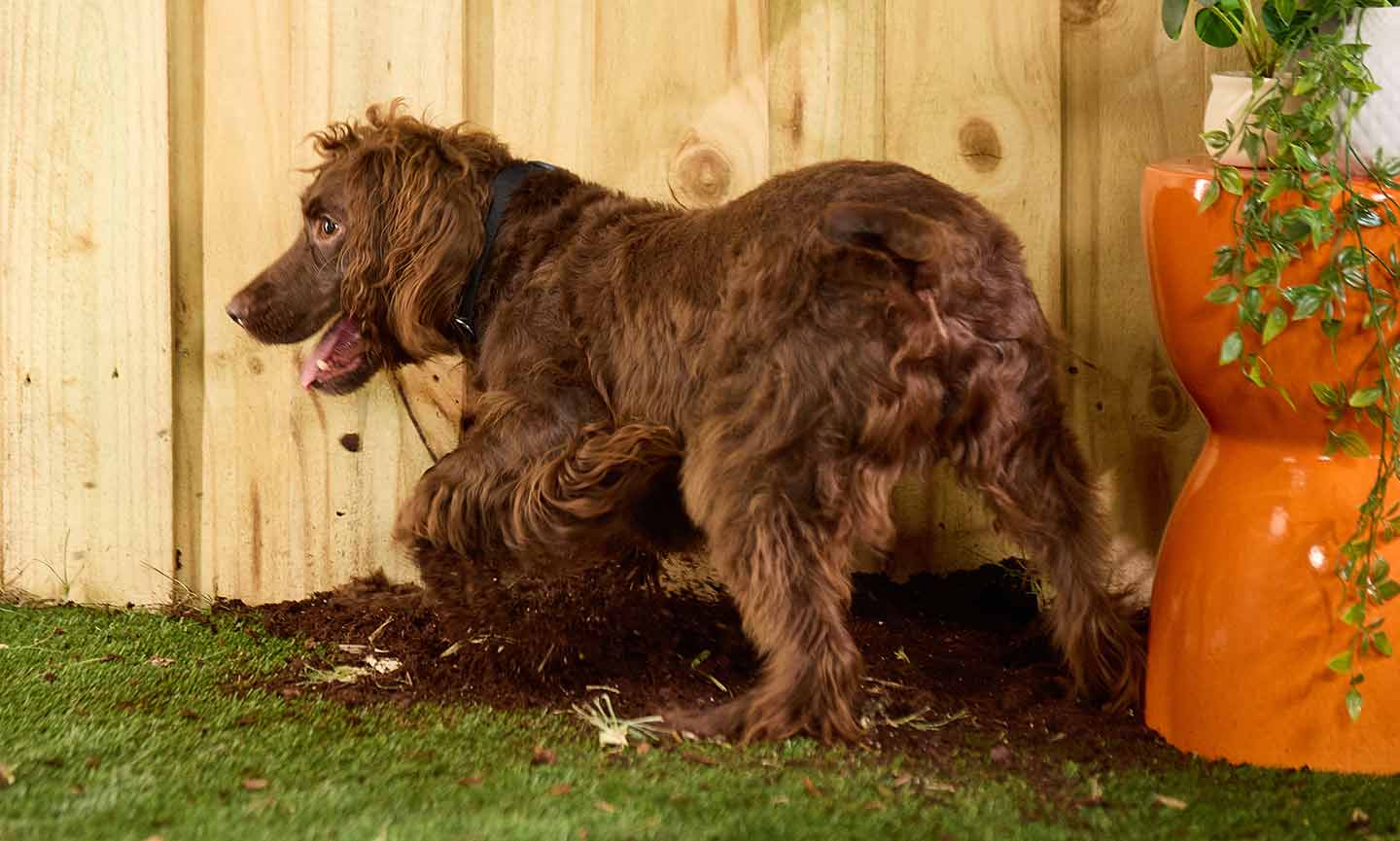
If you have a yard, be sure it’s properly fenced in. That means not only fencing the entire area, but ensuring that the fence posts are not wide enough to allow your dog to pass through.
Many dogs love to dig, so using rocks or other preventatives at the base of your fence is a safe bet, too.
Check for Dangerous Plants
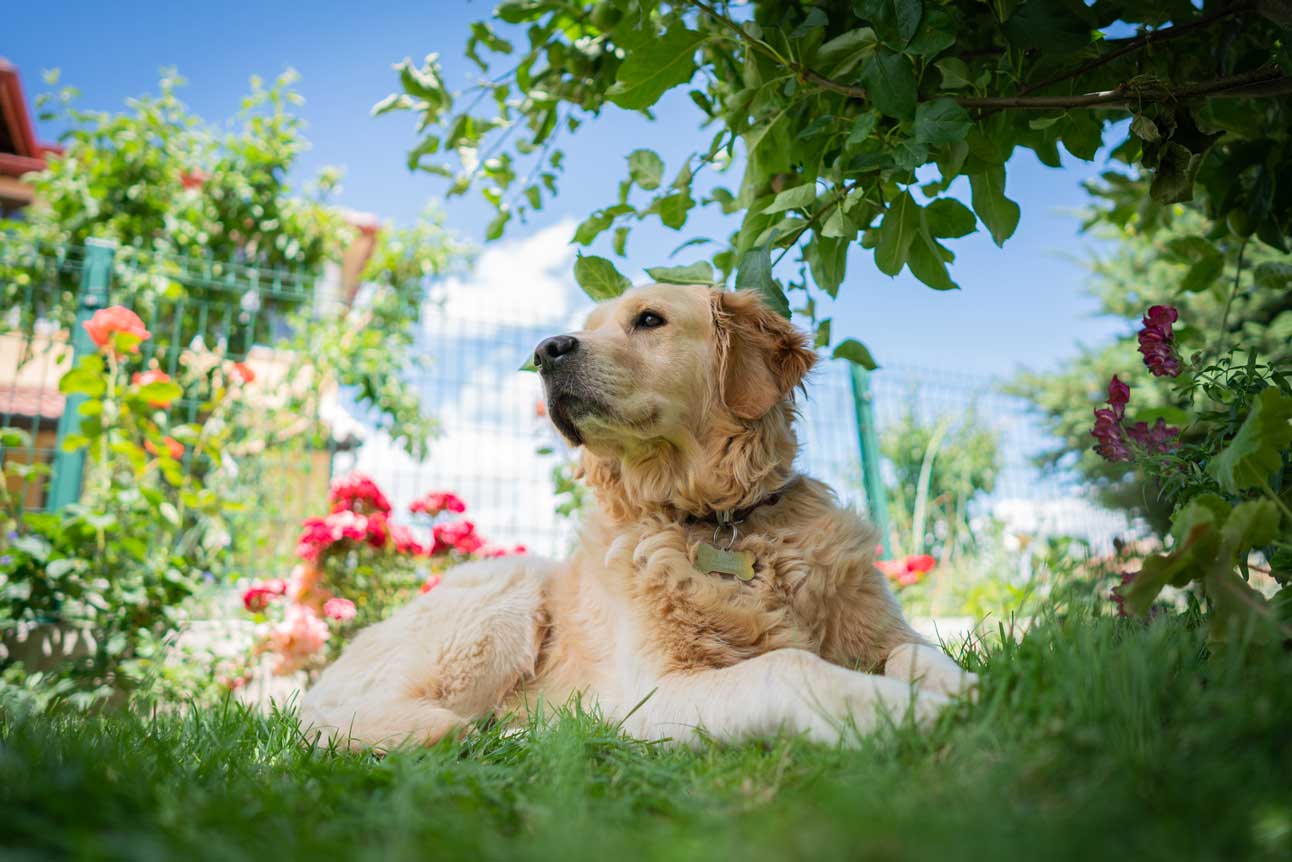
Choose a Stylish Dog Door
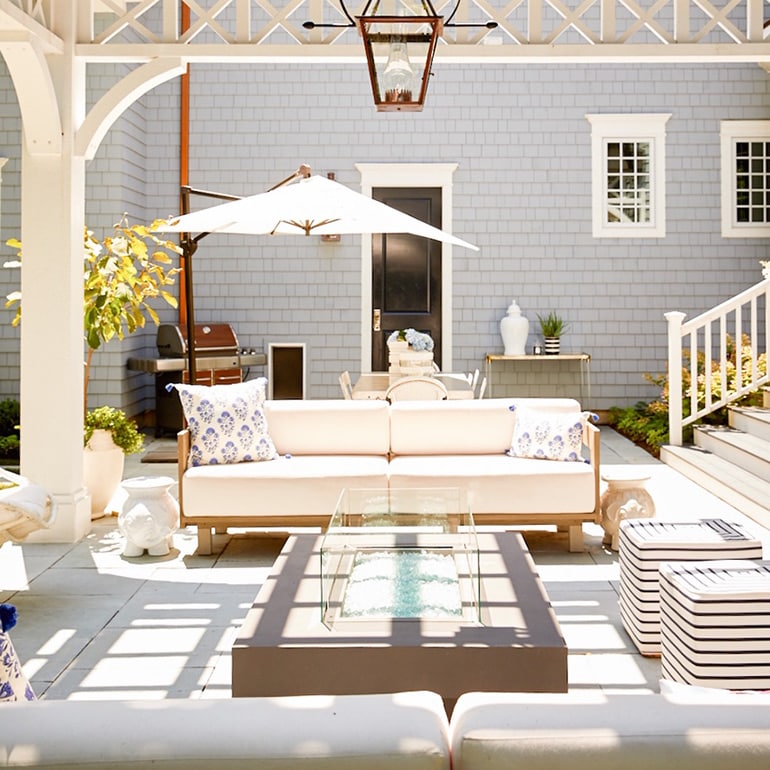
Photo by Mikes Boone Photography
If you plan to install a dog door, Musur recommends finding a one that blends in seamlessly with the exterior of your house.
“Dog doors truly are a blessing and, as an interior designer, I don’t think they need to be unsightly either,” she says, citing the doggy door she installed for her own pup, 9-year-old Georgie, as proof. (We bet you can’t even spot the dog door in the above pic!)
Protect Your Dog From Fleas, Ticks, and Other Outdoor Hazards
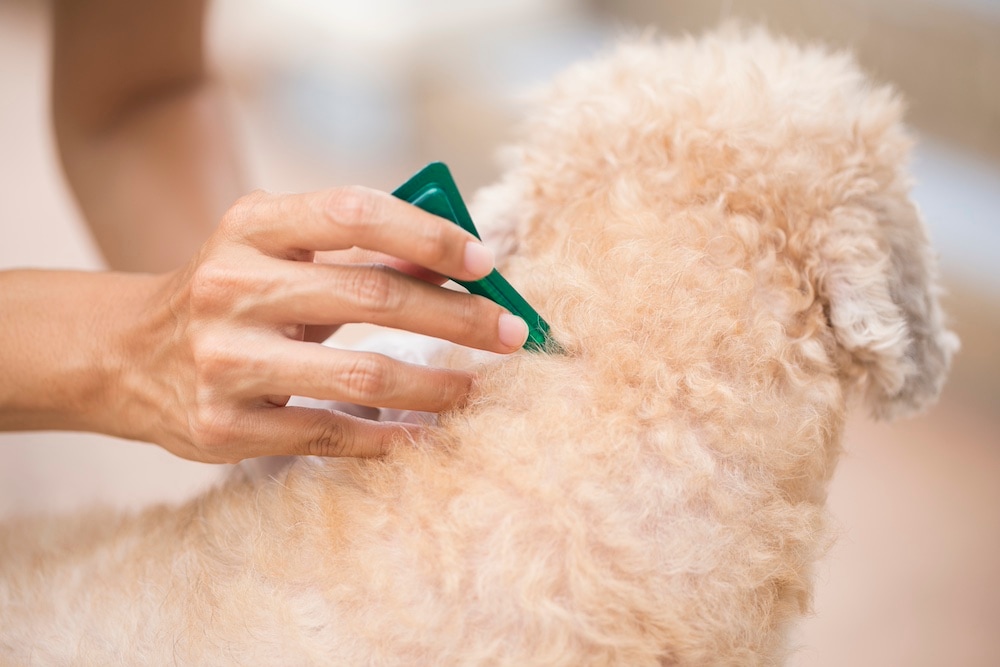
When it comes to fleas and ticks, there's no way to completely eradicate them from the great outdoors, even in your own backyard. Instead, protect your pup from these parasitic pests by speaking to your veterinarian about vaccinations and flea and tick prevention before you let your pup explore outside.
Share:




















